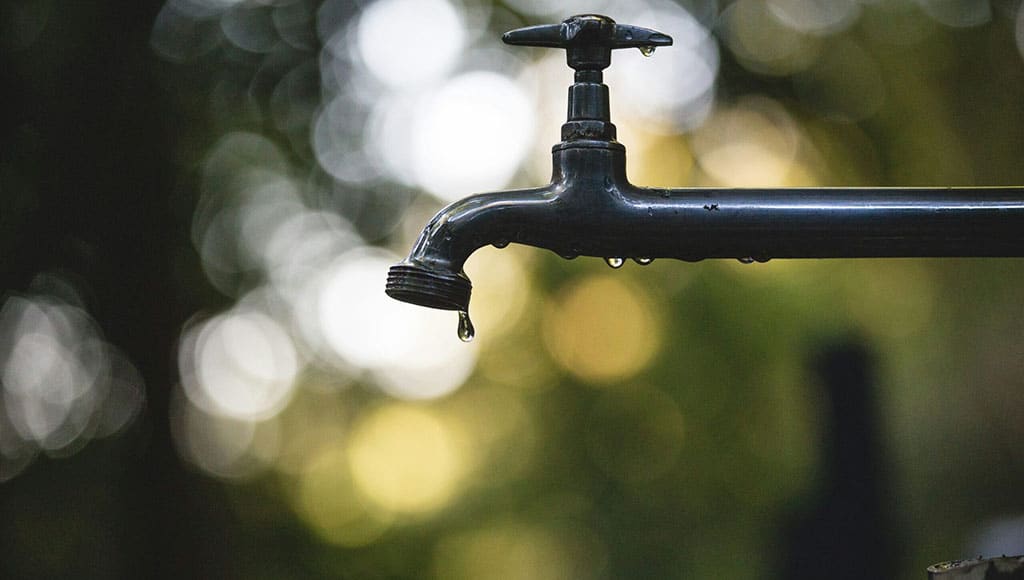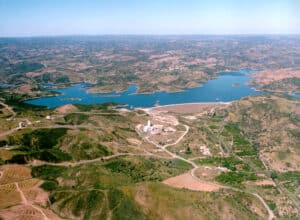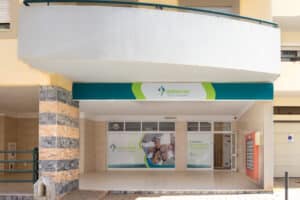Agricultural sector was initially expected to face a 70% cut in Algarve
Portugal’s minister for the environment has announced water cuts of 25% for agriculture and 15% for urban consumption in the Algarve to tackle the region’s drought.
The government has thus significantly reduced the water cuts initially planned for agriculture, which were estimated to reach 70%.
At a press conference on Wednesday evening held after the meeting of the commission for the prevention, monitoring and follow-up of the effects of drought, minister Duarte Cordeiro described the situation in the region as “serious” and called for commitment from all sectors to ensure that water reserves last into next year.
“If nothing were done about moderating consumption, we would reach the end of the year without water for public supply” in the Algarve, said the minister, who chaired the meeting alongside the minister for agriculture and food, Maria do Céu Antunes.
The minister for the environment said that the capacity of the Algarve’s reservoirs is at 25%, compared to 45% last year at the same time, explaining that there is an “objective need” to take measures to ensure that there is water in the region in 2025.
The goal for the urban sector is to reduce its water consumption in 2024 to 64 cubic hectometres, which would represent a reduction of around 15% compared to last year’s consumption (around 74 cubic hectometres) and around 8% compared to the average of the last 10 years.
The use of water from aquifers will be increased, the minister added, with capacity doubling from seven to 14 cubic hectometres.
For the tourism sector, consumption at tourist resorts and the use of groundwater is due to be reduced by 15%.
Regarding the agricultural sector, the government took into account the water needed “to at least guarantee the survival of species” and the water intended to be reserved for the beginning of next year.
Thus, between reservoirs and boreholes, a proposal was made to reduce last year’s water consumption by 25%, which was 135 cubic hectometres (100 h3 from aquifers and 35 h3 from reservoirs).
In reality, between the water expected to be saved at the Odeleite dam with the new restrictions and the reactivation of boreholes in the same area, the minister said this will translate into a reduction of around 50% in the eastern Algarve, and around 40% at the Funcho dam in the western Algarve, plus a 15% reduction in the catchment of underground water for irrigation.
The inter-ministerial commission meeting in Faro on Wednesday proposed a total of 46 measures – which will still have to be approved by the Council of Minister – to be applied by local councils, regional water authority Águas do Algarve, the Algarve Regional Coordination and Development Commission (CCDR Algarve), and agricultural and tourism entities and businesses.
In terms of domestic consumption, “each local authority will have to be able to save 15%” of what it consumes. If there are two months of non-compliance, penalties are planned, which could include a price penalty on the upstream distribution or a reduction in water volumes.
The reduction of pressure on water flows, the suspension of second meters and specific measures for the tourist sector were other measures highlighted by Duarte Cordeiro.
Duarte Cordeiro also announced, without specifying specific amounts, that three possibilities for financial support are being studied: for the irrigation associations responsible for hydro-agricultural schemes; for farmers, so that they can maintain their productive potential; and a credit line to meet cash flow needs.
Algarve farmers estimate €12 million losses
The water cuts announced for the agricultural sector will “force the implementation” of the most serious contingency plan for farmers in Silves, Lagoa and Portimão, said the chairman of the boroughs’ irrigators association.
“Given the lower volume of water available, the maximum contingency plan will have to be applied, which means irrigating for the survival of crops, mostly citrus fruit,” João Garcia told Lusa.
“Our hope is that we’ll have some rain by March, so that we can get some production in the citrus sector,” he said.
The Silves, Lagoa and Portimão “hydro-agricultural perimetre” serves 1,800 farmers in an area of 2,600 hectares, 90% of which are permanent citrus crops.
“The drought situation and the cuts are of great concern to farmers, with estimated losses of around €12 million,” he said.
João Garcia also said that the future for farmers “is now unknown, because we don’t know what the state of the trees and orchards will be like at the end of the year”.
“With the water available we have to try our best to save the trees,” he stressed.
Source: LUSA


























